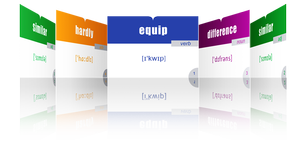WHICH IS THE BETTER DEAL (all tasks)
- Подробности
- 20
Here are various educational materials for practicing mathematics. Below are tasks about money problems with real-life examples.
CATBRIDGE — MATHEMATICS STUDYING MATERIALS
Mathematics – WHICH IS THE BETTER DEAL
-
A bar of chocolate costs 120 cents for 85 g, another bar costs 100 cents for 50 g. By how much is one bar more cost-effective than the other (per 100 g)?
-
A pack of rice costs 240 cents for 2 kg, another pack costs 150 cents for 1 kg. By how much is one pack more cost-effective than the other (per 1 kg)?
-
A bottle of juice costs 180 cents for 1.5 liters, another bottle costs 120 cents for 0.9 liters. By how much is one bottle more cost-effective than the other (per 1 liter)?
-
A block of cheese costs 250 cents for 400 g, another block costs 180 cents for 300 g. By how much is one block more cost-effective than the other (per 100 g)?
-
A bottle of oil costs 450 cents for 900 ml, another bottle costs 280 cents for 500 ml. By how much is one bottle more cost-effective than the other (per 1 liter)?
-
A pack of sugar costs 110 cents for 1.2 kg, another pack costs 95 cents for 1 kg. By how much is one pack more cost-effective than the other (per 1 kg)?
-
A carton of milk costs 160 cents for 1.5 liters, another carton costs 120 cents for 1 liter. By how much is one carton more cost-effective than the other (per 1 liter)?
-
A pack of butter costs 200 cents for 250 g, another pack costs 350 cents for 500 g. By how much is one pack more cost-effective than the other (per 100 g)?
-
A pack of pasta costs 75 cents for 300 g, another pack costs 120 cents for 500 g. By how much is one pack more cost-effective than the other (per 100 g)?
-
A cup of yogurt costs 80 cents for 150 g, another cup costs 120 cents for 200 g. By how much is one cup more cost-effective than the other (per 100 g)?




